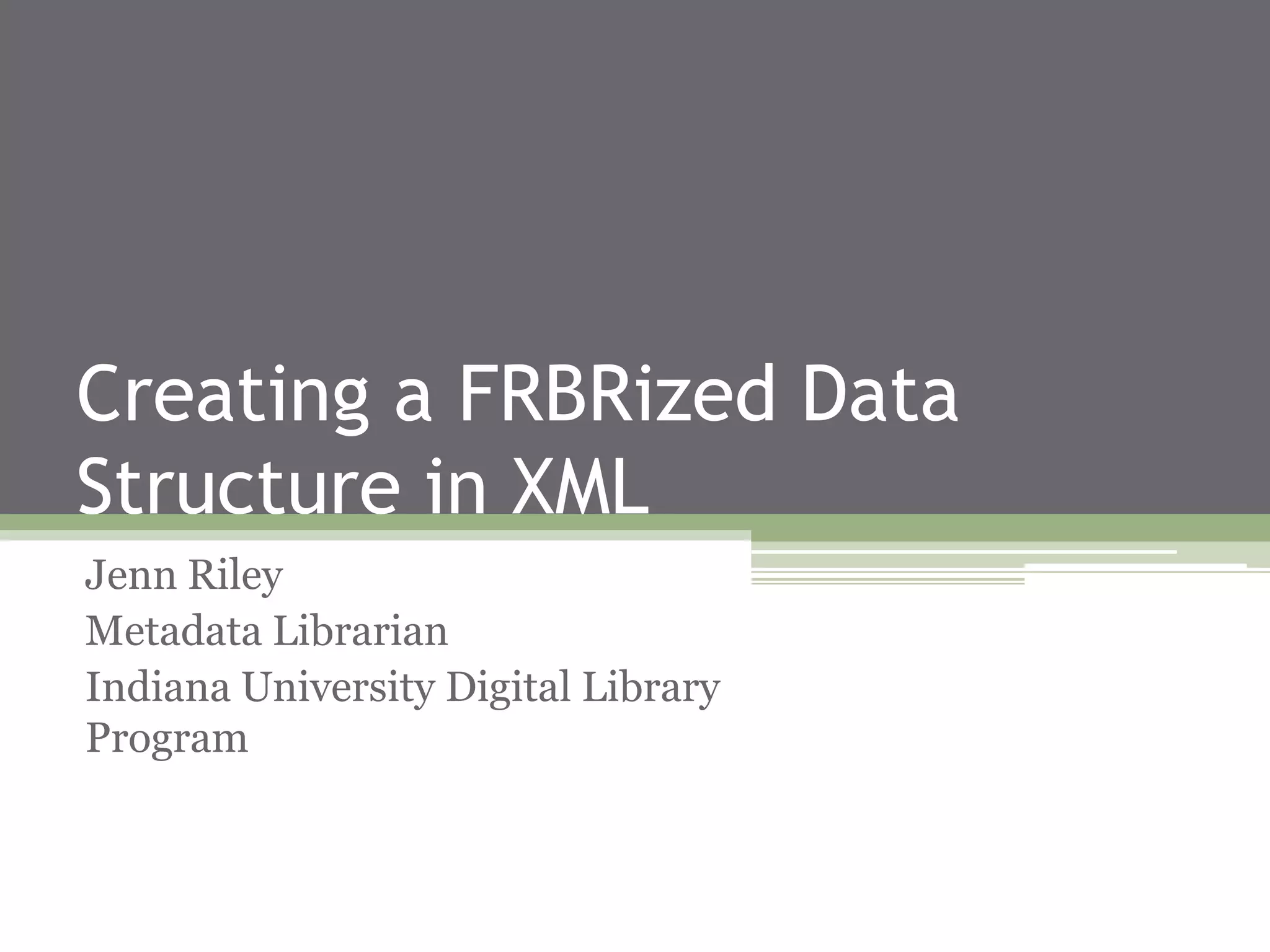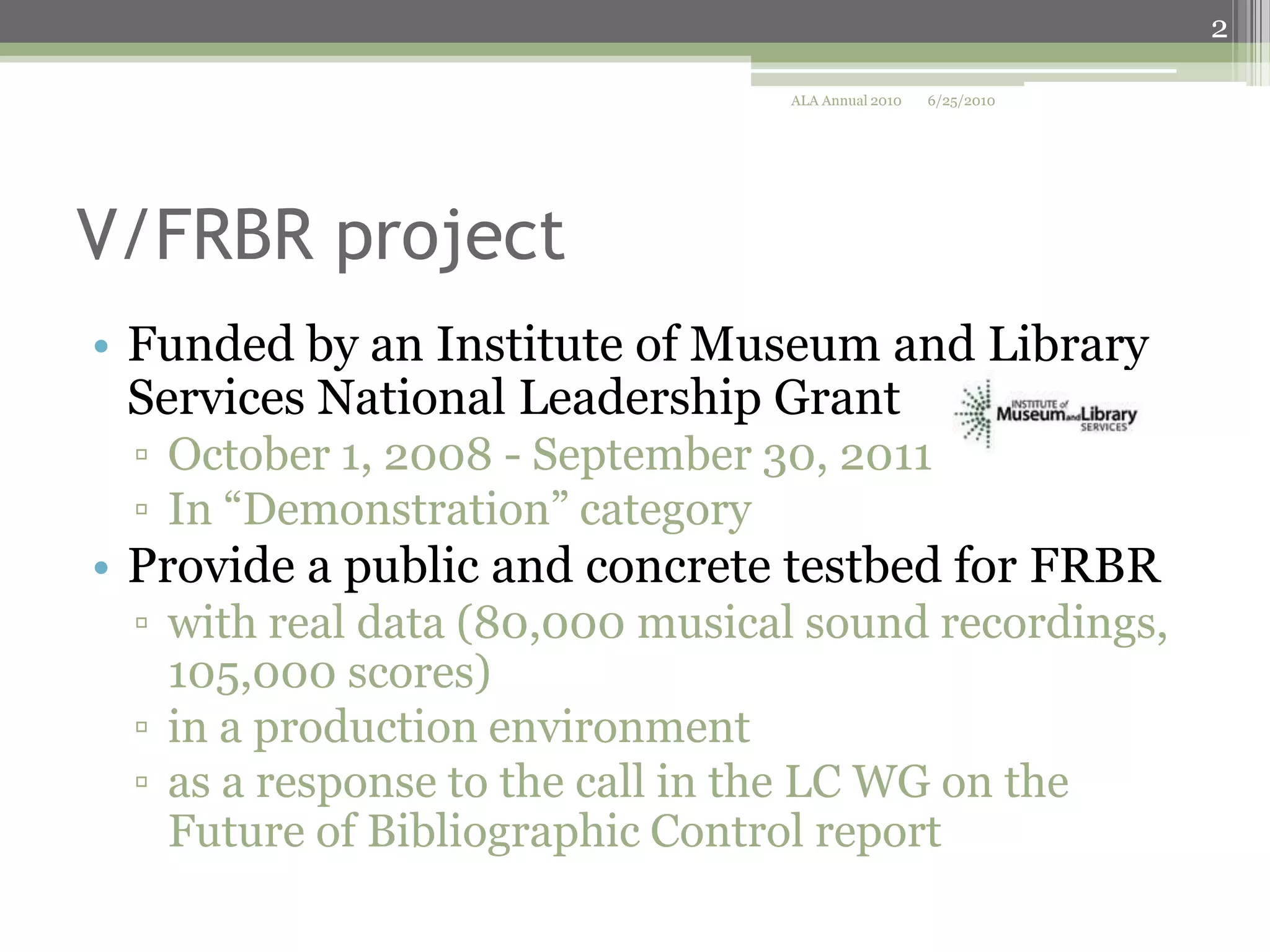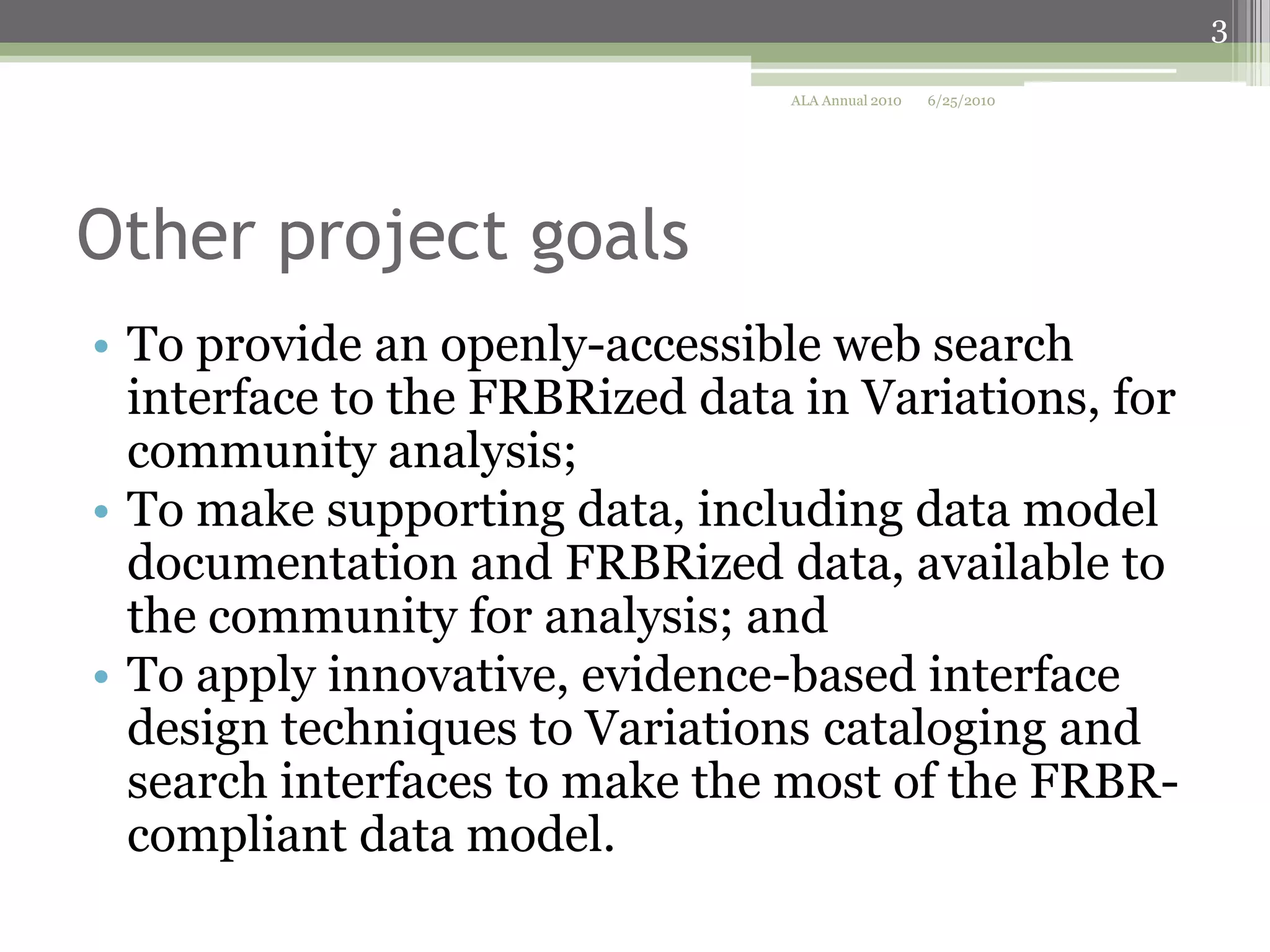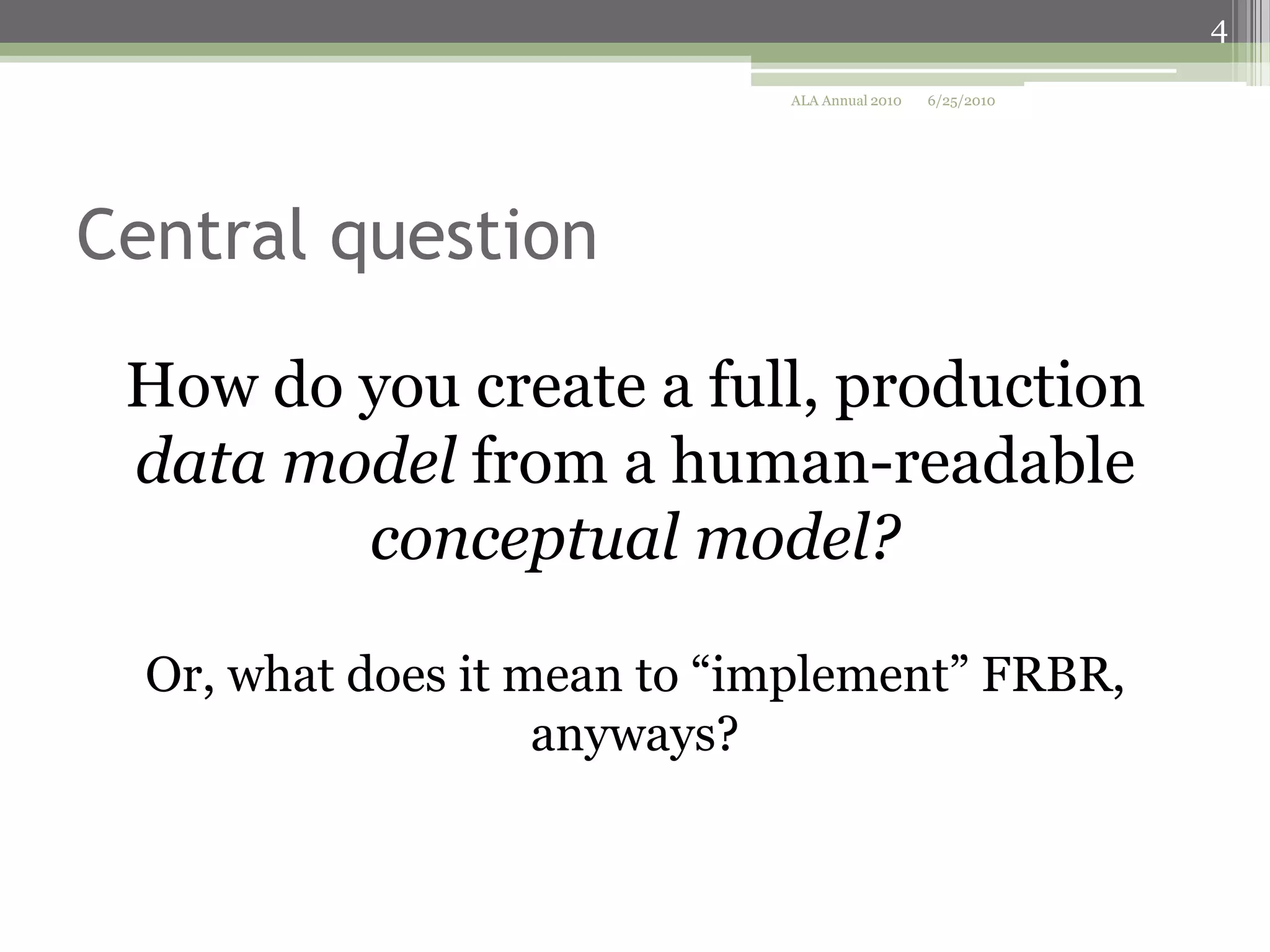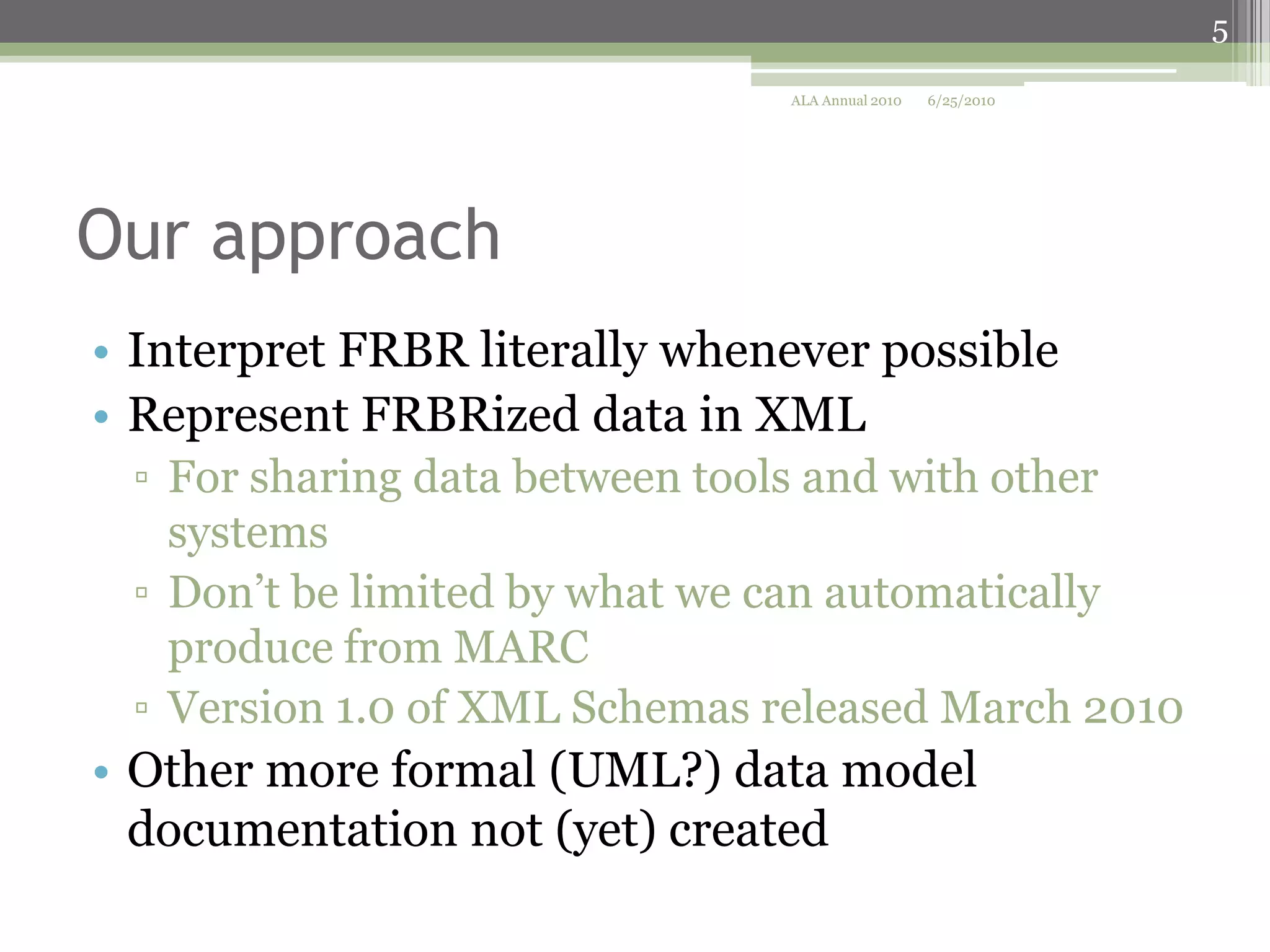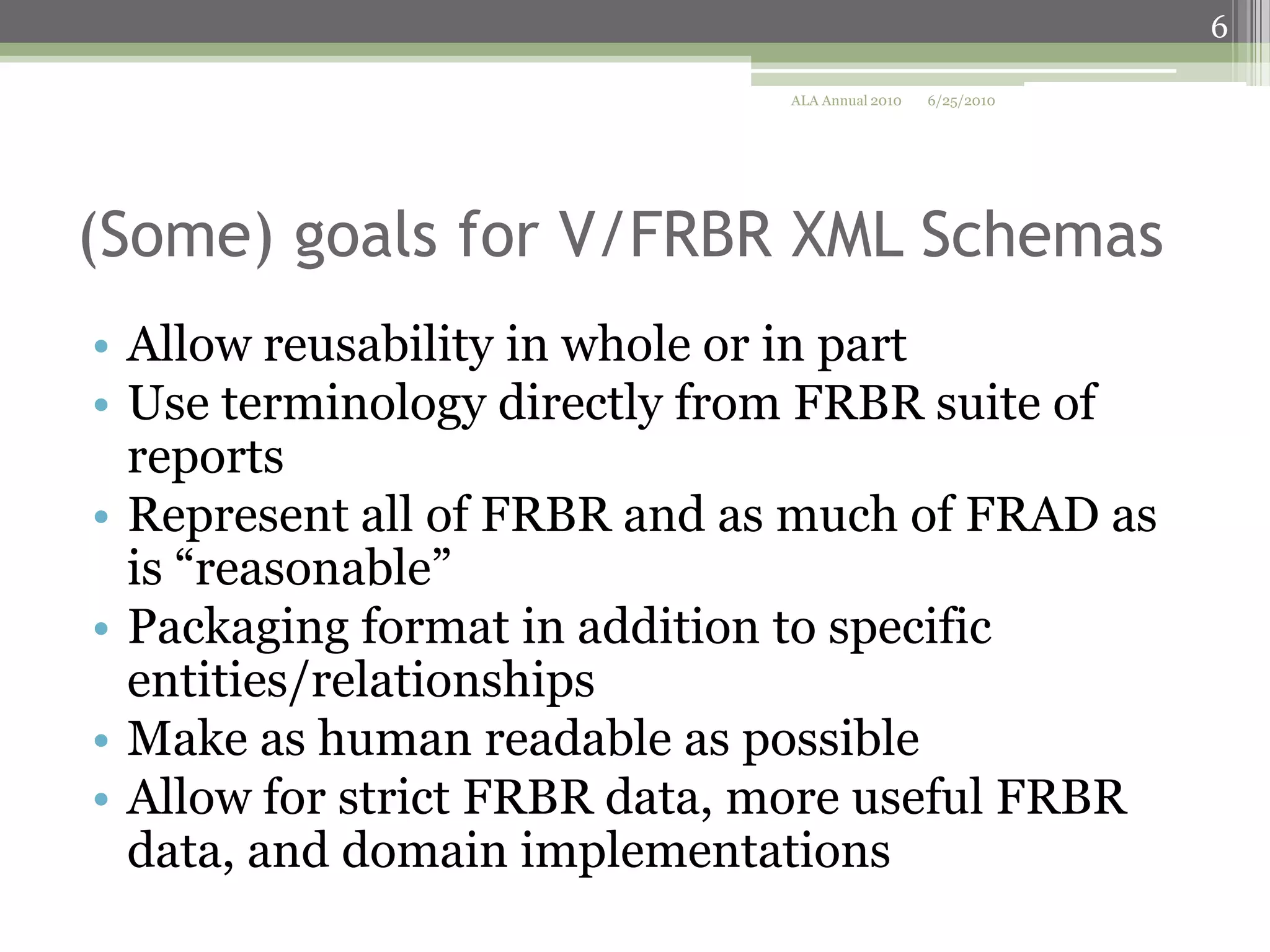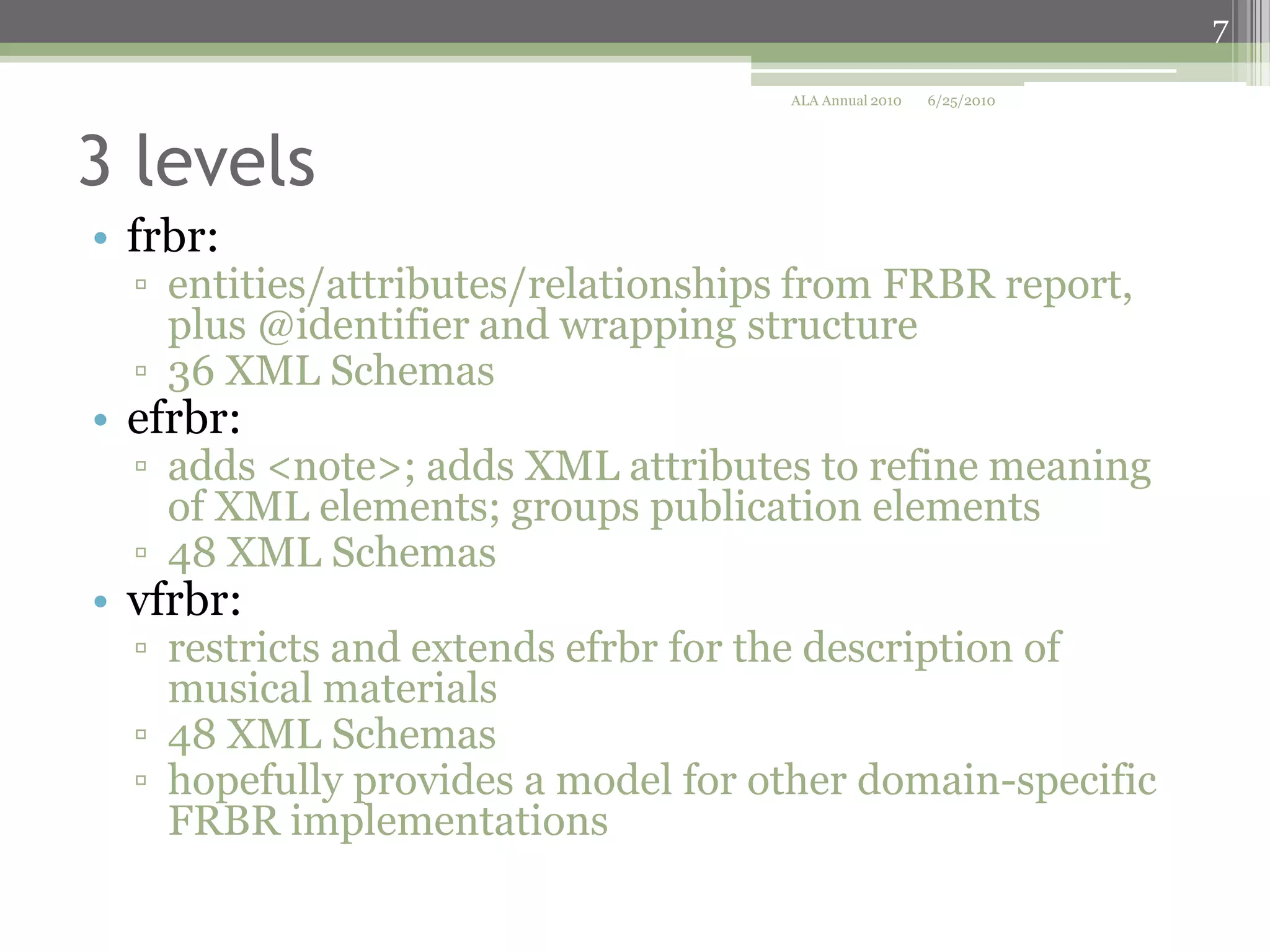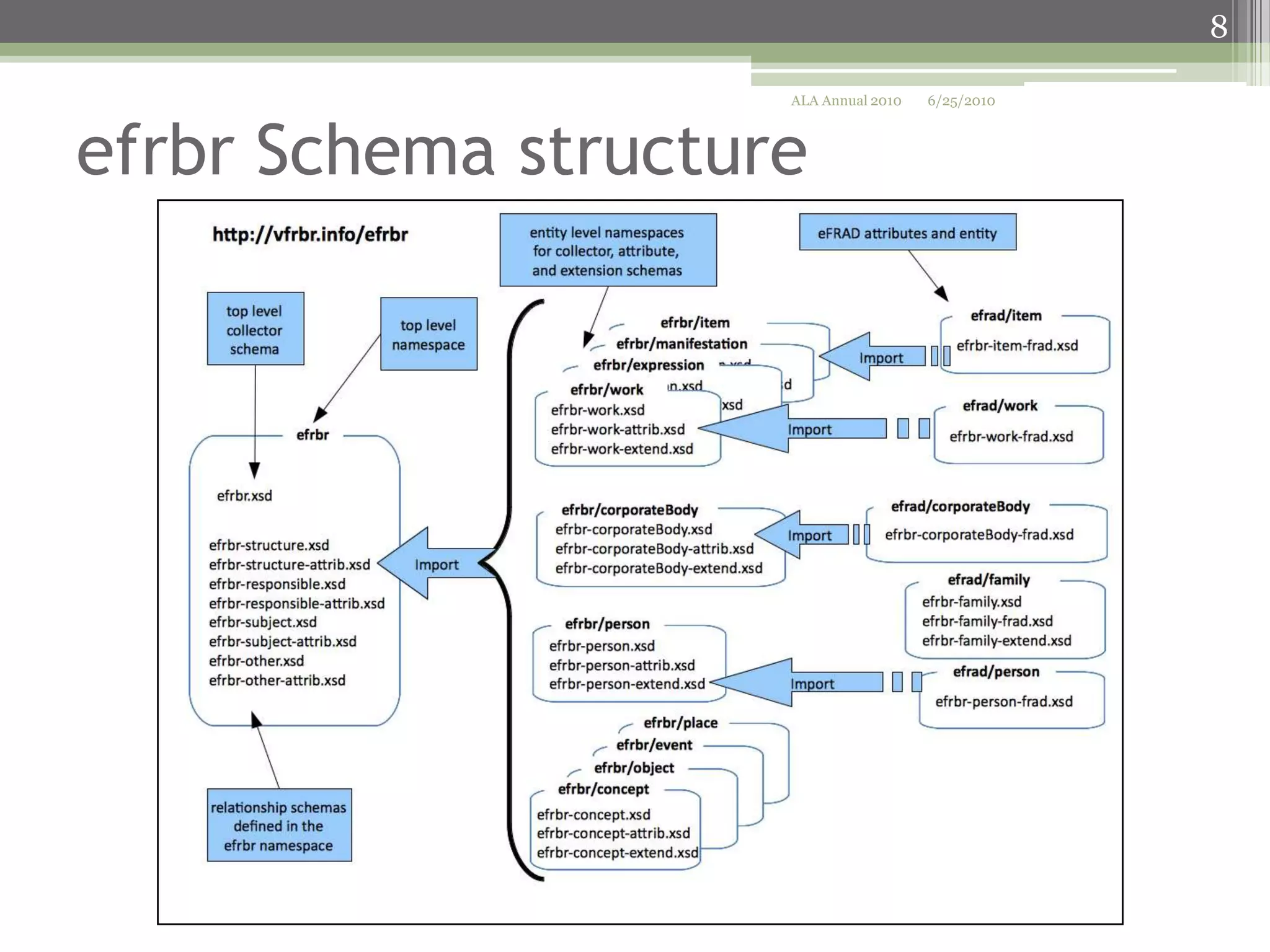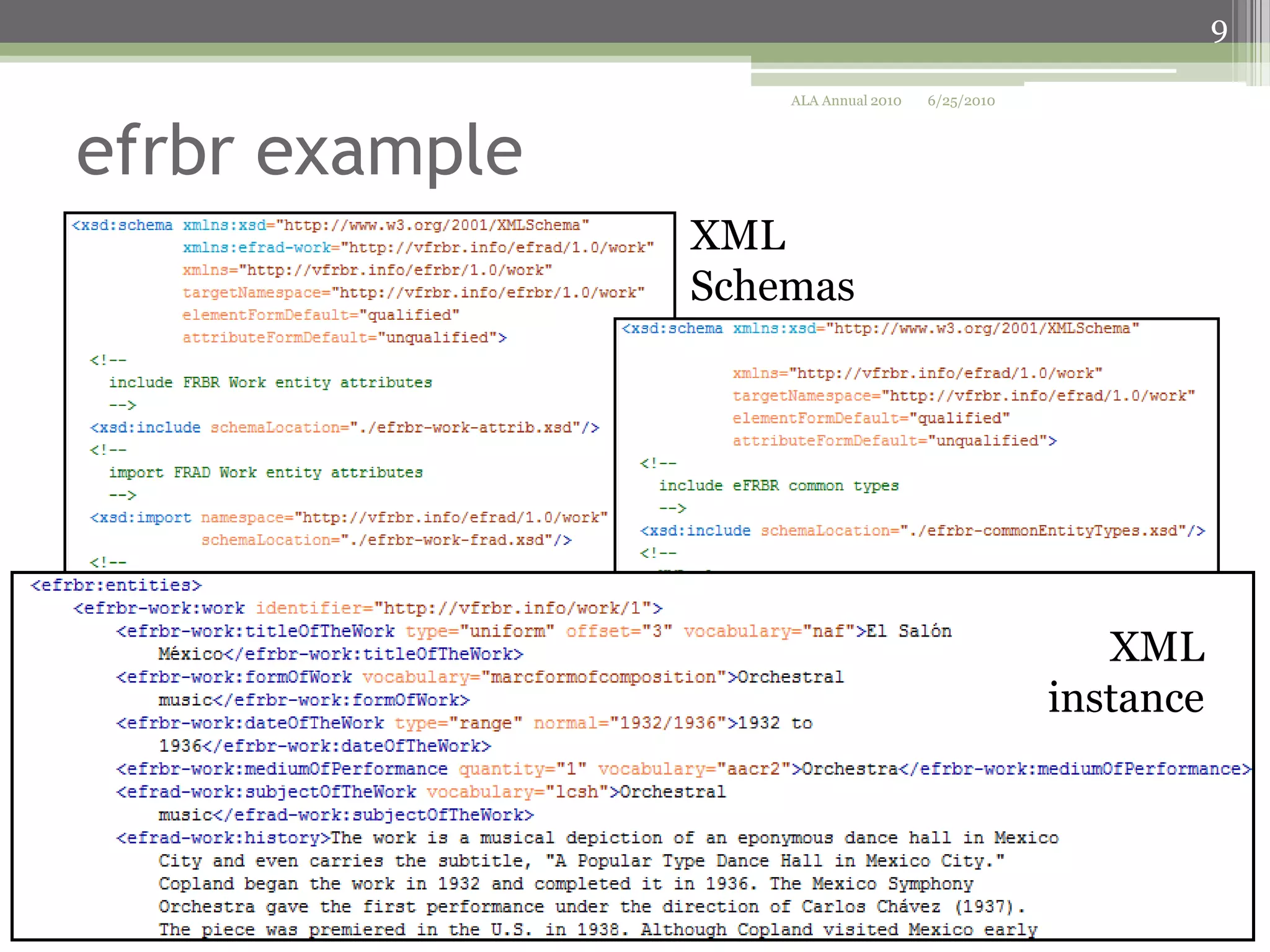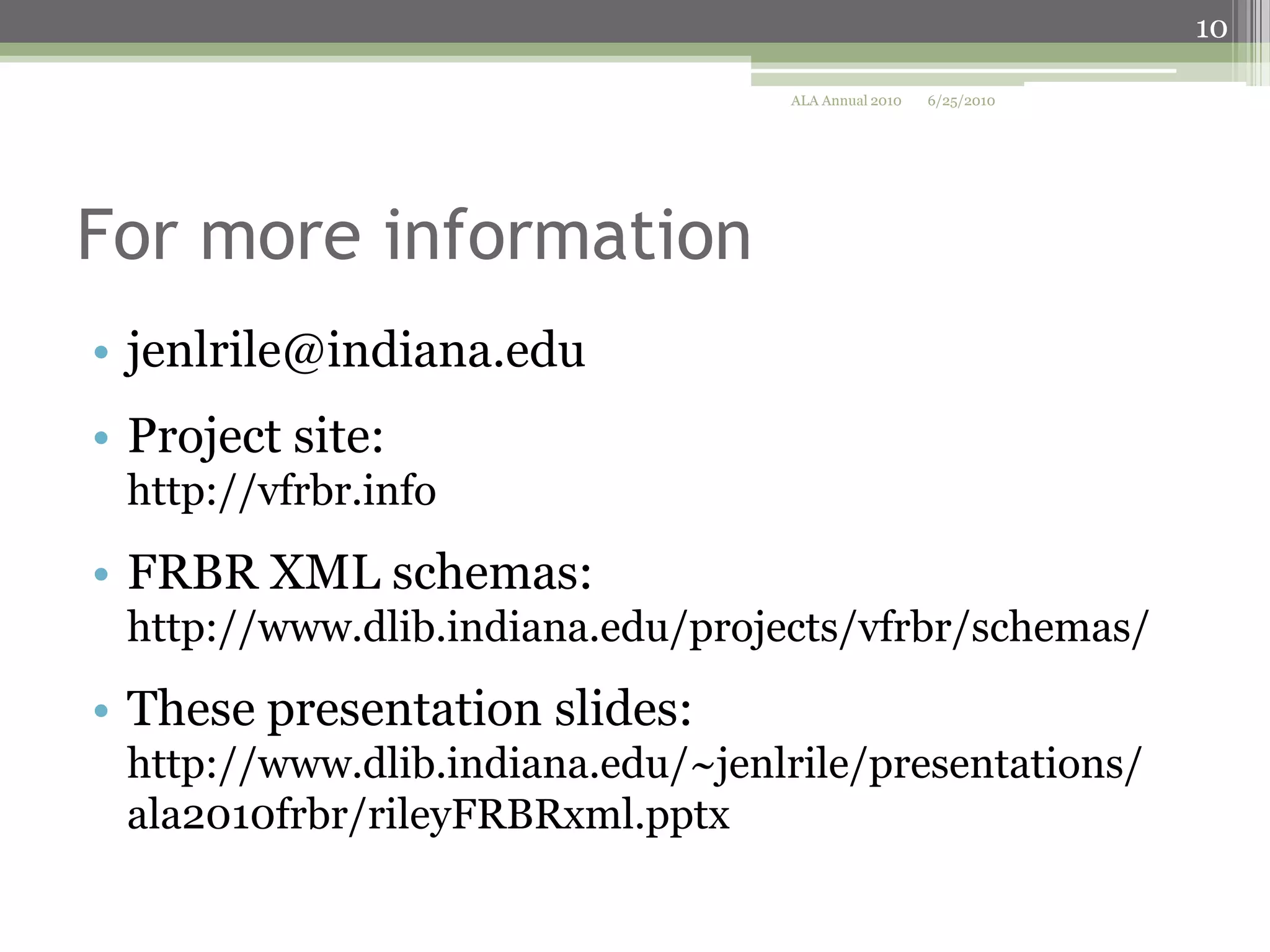The document discusses the creation of a FRBRized data structure in XML as part of a project funded by the Institute of Museum and Library Services. It outlines the project goals, including providing an accessible web interface for community analysis of music data and making supporting documents available. The approach focuses on interpreting FRBR literally and developing XML schemas that enhance reusability and represent the data model effectively.
